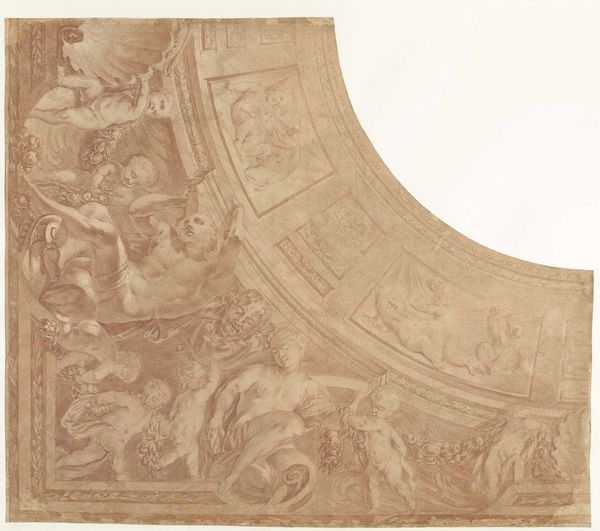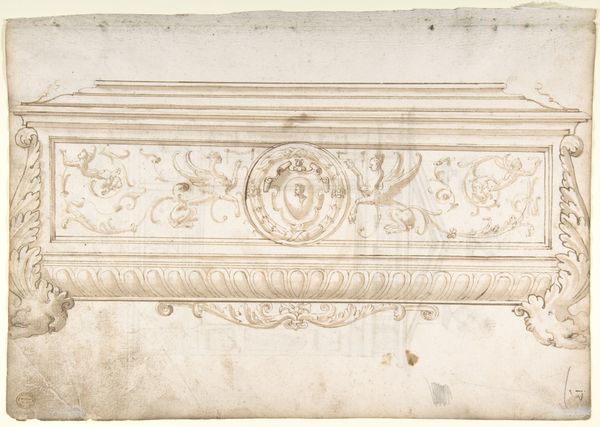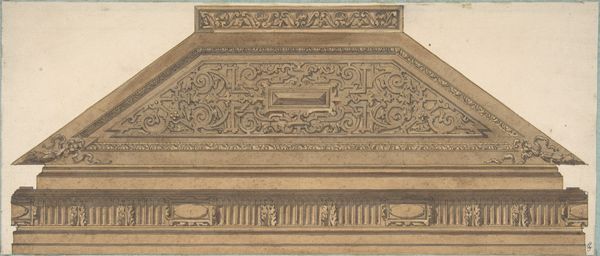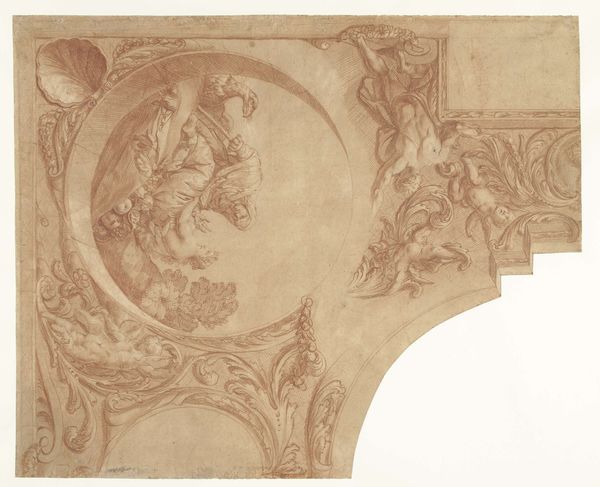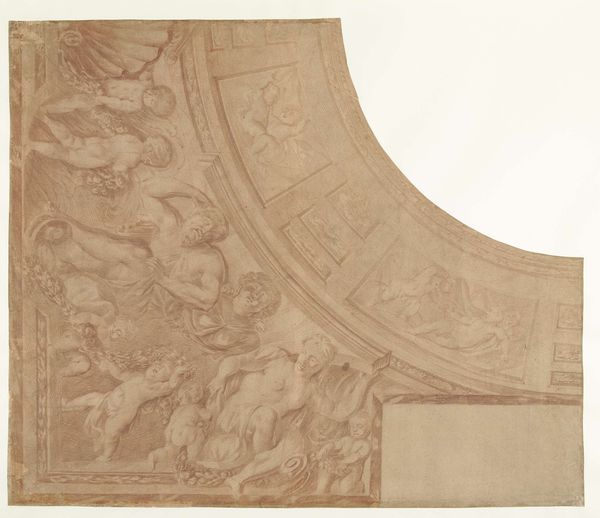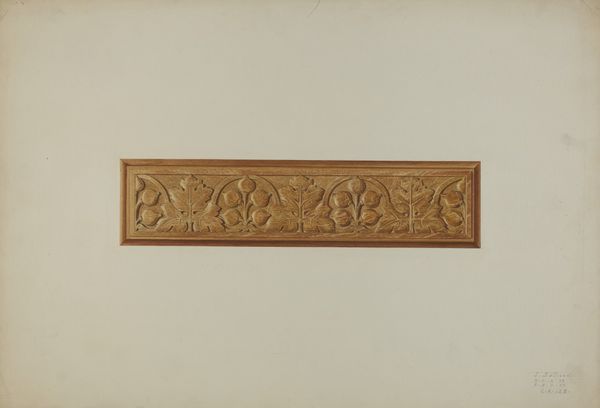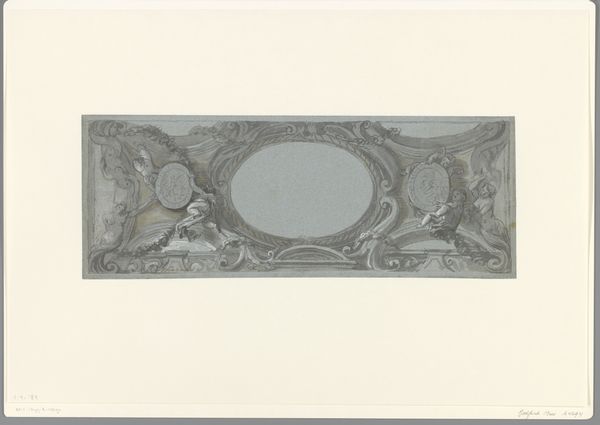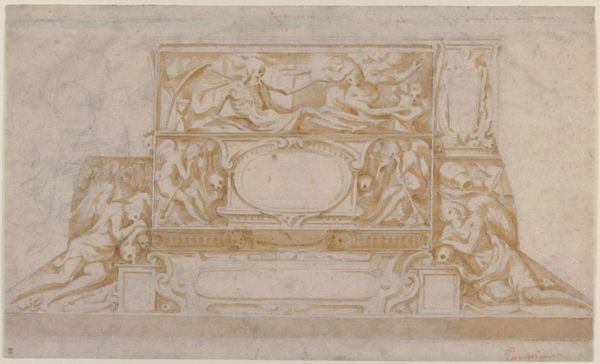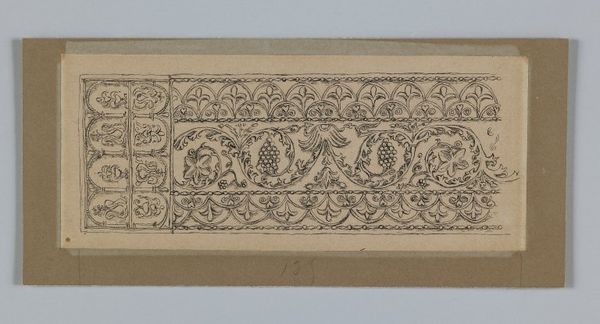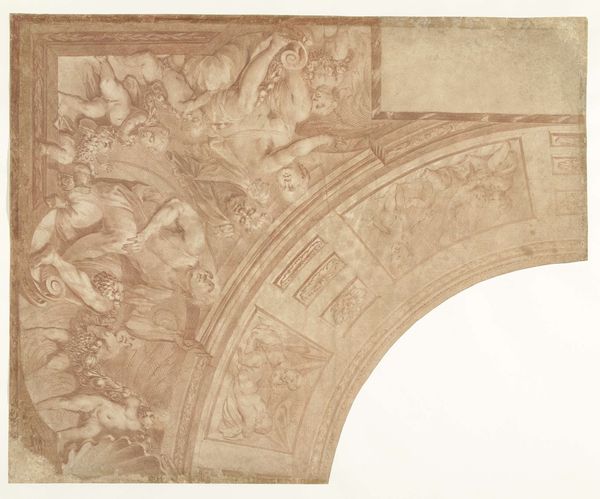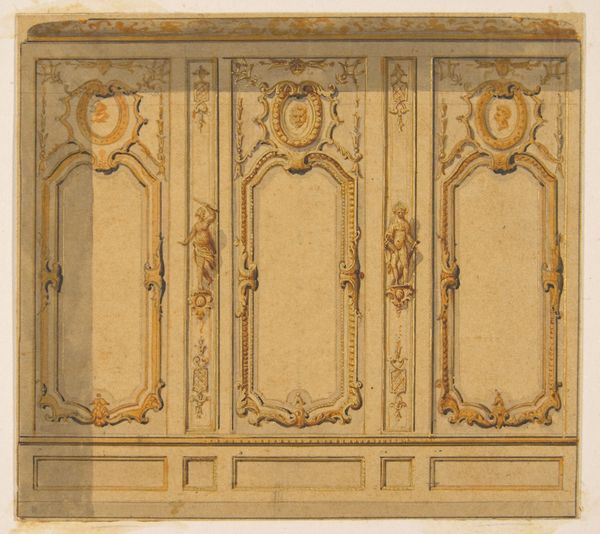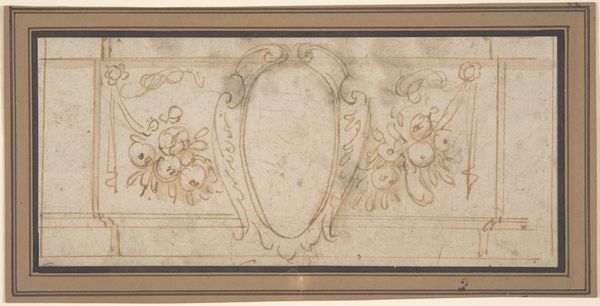
drawing, paper, ink
#
portrait
#
drawing
#
allegory
#
etching
#
figuration
#
paper
#
11_renaissance
#
ink
#
history-painting
#
italian-renaissance
Copyright: Public domain
Curator: This is "Tomb of a Prince" a work on paper, created with ink, by Jacopo Bellini, during the Italian Renaissance, currently held in the Louvre. Editor: It has a mournful quality to it, don’t you think? Even with the delicate, almost ethereal linework, there’s this profound sense of loss. It's evocative of grand funerary monuments from antiquity, isn’t it? The sort meant to not just commemorate but aggrandize. Curator: Exactly. Bellini and his contemporaries were deeply influenced by classical forms and narratives, and this drawing presents an imagined tomb, drawing parallels between Renaissance princes and classical heroes, reinforcing power and legacy through visual association. The artistic conventions served as political statements. Editor: You see it in the triumphal procession depicted on the tomb’s base and the prince's body on the lid, elevated, seemingly floating, with a distant expression, as though on the cusp of another world. One must consider the ethics surrounding posthumous representation. Whose narrative does this "Tomb" promote and what ideologies does it solidify? Curator: True, and the iconography speaks volumes about societal values. Chariots and figures echo scenes of military triumphs—art cementing elite narratives about leadership and heroism, influencing both present-day perception and future historical interpretation. This was how they wanted to be remembered, or, perhaps more accurately, how their families and regimes wanted them remembered. Editor: Yet, there’s an undercurrent of vulnerability too. Despite the visual assertions of power and the strategic employment of allegory, there's something unsettling in its permanence, it's meant to defy time, and therefore becomes a point to look at our collective notions about mortality. It becomes a poignant artifact. Curator: It's fascinating to think about this artwork’s purpose in its own time. Was this meant as a design proposal for a physical monument or perhaps a commemorative drawing? Editor: Irrespective of Bellini’s precise intentions, it urges us to consider art as more than aesthetic objects. Each piece interacts with political and social power dynamics. Curator: Agreed. "Tomb of a Prince," though rendered in ink, invites contemplation of mortality, legacy, and art’s undeniable role in shaping perceptions. Editor: It certainly reminds us to analyze art and challenge established narratives while we consider the voices that history often chooses to amplify, or bury.
Comments
No comments
Be the first to comment and join the conversation on the ultimate creative platform.
